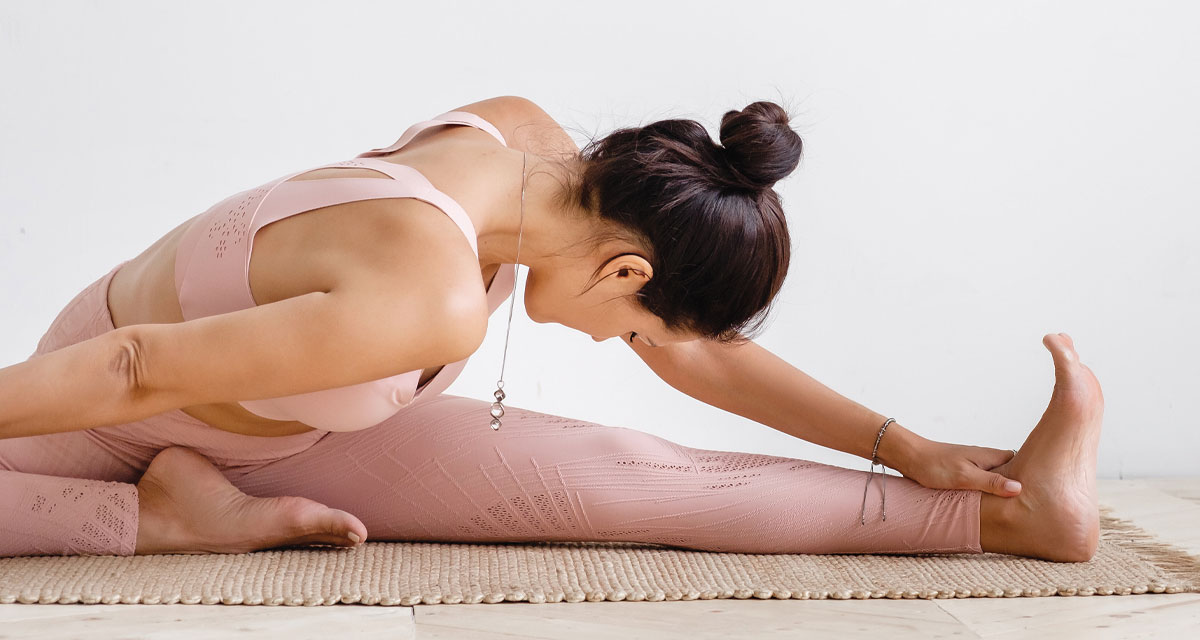Not everyone can jump spryly out of bed ready to tackle an elliptical. Circadian rhythm beats like a ticking clock, creating a biological awareness to open your eyes at first light, and feel the pull of sleep past dusk. Your goals and health needs can give you an upper hand in deciding when to engage in physical exercise. Whether it’s morning, noon, or evening, identifying your personalized prime hour can prevent stress, injury, and promote a night of sound sleep.
Stretching
One sign of aging is a shortened range of motion. Steps shorten to a shuffle. Arms lose the limber swing. And, the neck, shoulder, and back no longer bend with relative ease. As the body executes strength-training moves, the result is a protection against falling and injury. Stretching can be done standing or sitting and moving the arms and legs, or following a yoga or Pilates routine.
- In a study based on the exercise walker’s cognitive function, researchers concluded that women who spent 1.5 hours weekly gained more than women who only spent 40 minutes per week.
- A walking shoe tends to break first at the midsole!
- Exercise before breakfast, if the goal is to burn fat.
- In seeking to reduce blood pressure levels by 10% and sleep better, you should begin a physical routine by 7:00 AM.
Low-Impact Aerobics
In the desire to improve bad knees and hips and overcome an overall feeling of tiredness, the ideal exercise is a 20-minute low-impact and cardio circuit. Take a brisk walk, using your arms, or ride an exercise bike.
- Exercise increases blood circulation and releases serotonin to the brain for a boost of processing and mental acuity.
- It’s vital not to advance workout levels too quickly! Wait at least two months to improve balance and strength.
- With moderate exercise, individuals will lose four cups of water per hour. After each workout, replenish your liquids with a minimum of two cups!
- If you suffer from sleep apnea, start exercising mid- to late afternoon.
High-Impact Aerobics
Do you love the force of the water rushing past your body or the heightened rush of a dance routine? Whether it’s 20, 30, 45 minutes, or an hour, high-impact exercise is a sustainable action.
- Running, at a steady pace, for a mile outdoors or on a treadmill burns 30% more calories than walking the same distance.
- Improve your ankle strength and wear “cross-trainers” or “court shoes,” rather than running shoes, for actions that involve turning the foot or pivoting.
- Sweat is an indicator of fitness! Your body is showing its ability to cool!
- The body’s temperature reaches its peak between 2 PM and 6 PM. It’s an ideal time for those seeking to improve their physical stamina.
Strength Training
The body develops muscle through tests of resistance. Sometimes the routine involves the body, weights, or a variety of machines. Begin with ten minutes daily if you are new to strength training to give your muscles time to rest. Joining a gym allows individuals to learn how to use a variety of equipment to prevent injury.
- Human thighbones are stronger than concrete.
- Running uphill burns 28% more calories than cycling uphill.
- Moving daily slows degenerative joint diseases and strengthens the bones, muscles, and tendons!
- Body temperature reaches its peak in the afternoon to promote coordination and stamina.
- Don’t exercise after 9 PM. The body is already releasing the natural chemical melatonin in preparation for sleep.
The human body is a fascinating organism. From our fingers’ strength to the tendons in our toes, every aspect helps our muscles engage in physical motion. Find the peak of your power, and start engaging in a daily energy plan!



















